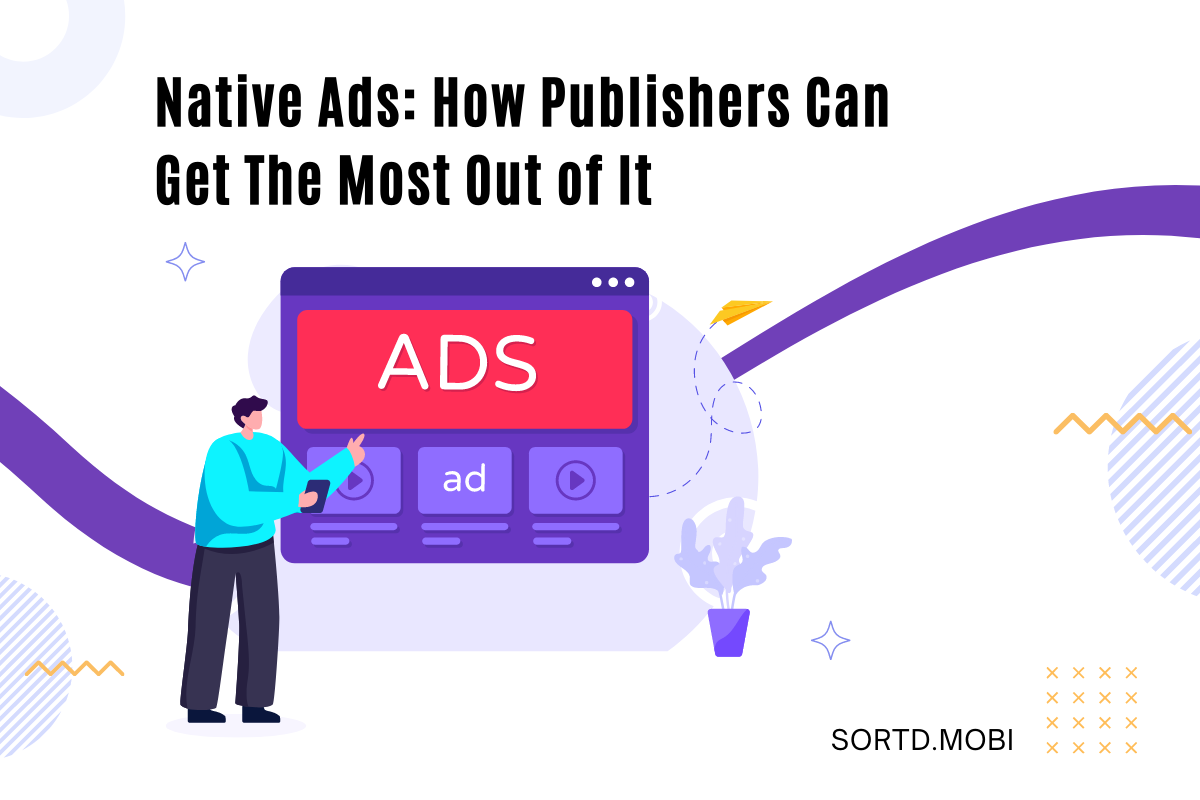For publishers, native ads have the potential to accelerate their revenue generation without causing them to alienate users, search engines or advertisers. However, some publishers make mistakes as they strive to leverage the benefits of these natural-looking advertisements. To attract more users, publishers can take certain steps to enhance the efficiency of their native ads.
In this article, we will focus on:
- Definition of native advertising.
- What makes native ads so effective.
- Top tips on how publishers can maximise their native ads.
Let’s start with a quick definition.
What is Native Advertising?
Publishers always look for ways to make advertisements appear more natural within or next to their content. In native advertising, content and ads blend very naturally that they don’t even look like advertisements. These ads are typically marked with a tag that says “advertisement” or “sponsored”, as required by law.
What makes native ads so effective?
Ads are everywhere. Users can’t browse the internet these days without encountering at least two to three advertisements, even when using ad-blocking software. Unfortunately, many of these advertisements are sometimes annoying, intrusive, or irrelevant. Consequently, users have developed “banner blindness” over a period of time where they just ignore ads automatically and scroll by.
Native ads can efficiently combat banner blindness by naturally blending with the surrounding content. They are designed to be exciting and catchy without being intrusive or disruptive. As a result, native ads have higher viewability and interaction rates, attracting advertisers and allowing publishers to push their revenue.
How can publishers make their native ads more effective?
Even though native ads are incredibly effective, their efficacy depends on multiple factors. These can include ad sizes, placements, creatives, optimisation, etc. Everything, from the layout and content of a page to the advertisers available on your selected network, can affect how well your native ads perform.
We are going to share some top tips on how publishers can maximise the potential of their native ads.
Make use of the right kind of targeting to keep ads relevant
There are multiple ways to target site visitors, but some of these methods rely on third-party cookies. Not only will these cookies be removed quickly, but they often show users ads that aren’t even relevant to their current query or situation at all.
Contextual targeting has emerged as an amazing way for publishers to target users. It’s highly effective because it offers higher click-through rates, making it attractive to advertisers. Some publishers stick to contextual targeting, claiming that their advertisers will pay about 50% more for these ads instead of standard or native ads.
By using contextual targeting in combination with native ads, publishers can provide relevant advertising to users and a non-intrusive experience while lifting their revenue and attracting advertisers.
Labels are not a bad thing
The biggest advantage of native ads is that they are designed to blend with surrounding content seamlessly. Unfortunately, that led to some other concerns about users being tricked into clicking on ads while thinking they were about to see more relevant content. As a result, some visitors feel duped by the brand and lose faith in it.
This doesn’t mean that you shouldn’t use these ads at all. Research suggests that many people don’t mind short ads or even product endorsements from content creators or influencers they trust. However, they prefer that these ads should be marked or labelled.
Quality Over Quantity
Native ads tend to blend smoothly with surrounding content, but that doesn’t mean publishers should overstuff their websites with them. Some publishers focus on quantity, raising the ad density to the maximum possible limit, which is 30% of the total page. But this strategy can backfire. Hence, it is better to focus on quality. Try to make clever use of page layout and employ best ad practices.
Keep analysing and improving
No native ads strategy will work perfectly well from the beginning. There are just many factors that can impact whether a publisher’s strategy will work or not. That’s why it is critical to continuously analyse and review the results of your ads, spotting and rectifying any potential challenges before they become problematic.
It can also show which of your native ads deliver the best results and facilitate informed decision making.
Partner with a trusted ad services provider
There are numerous mobile app development services providers in the market who also provide ad services. Each of them has its own approach, expertise, tricks, and unique methodologies. However, the challenge lies in finding the one that best fits your needs. At Sortd, you not only get the best Android and ios app development services, but some of our experts can also guide you on best ad practices. This way, you can efficiently optimise your native ads that can work best with your content and users.
Conclusion
Native ads appeal to advertisers and users equally, making them pivotal for any publisher. The ads seamlessly blend with the surrounding content, making them less disruptive for users while combating banner blindness. It is recommended to use them rightly while utilising best ad practices for best results.


